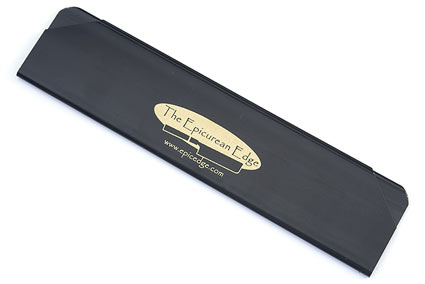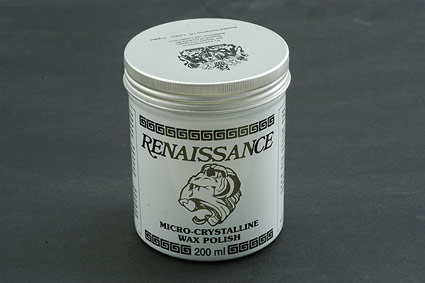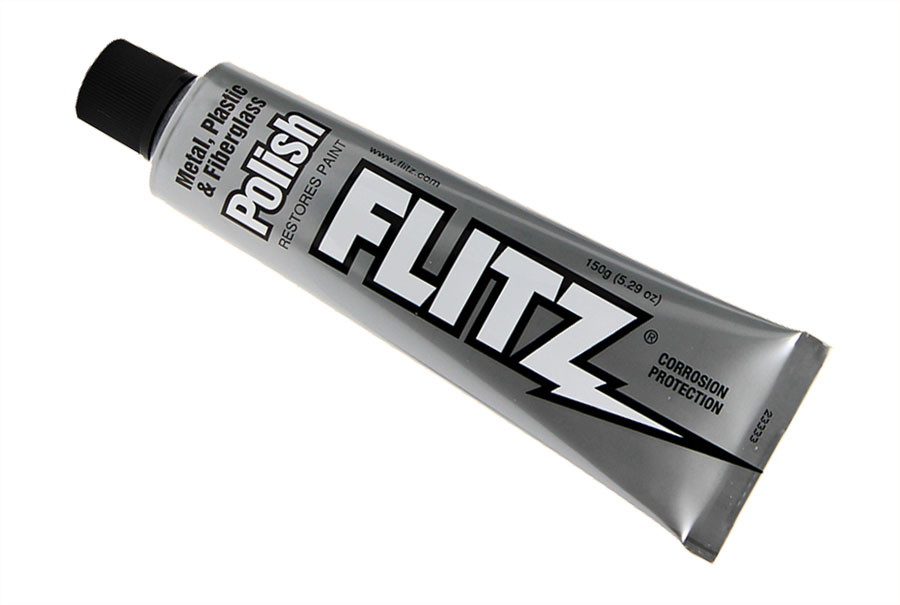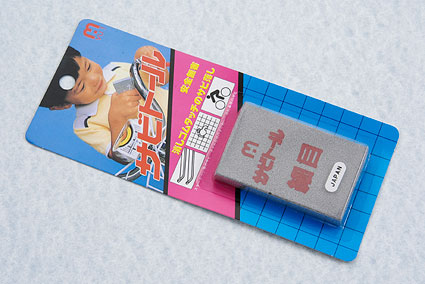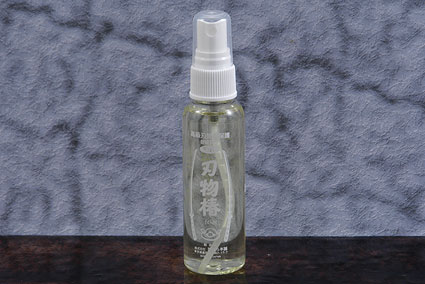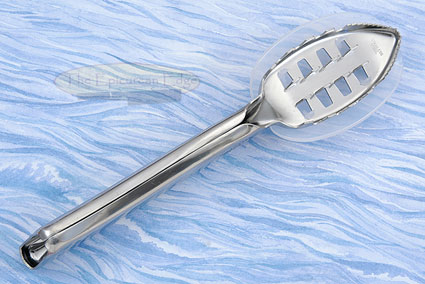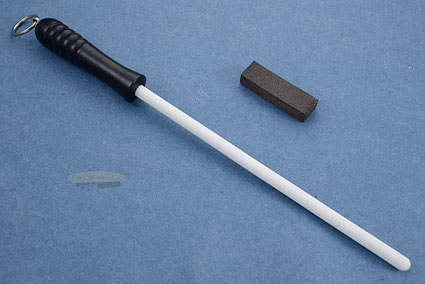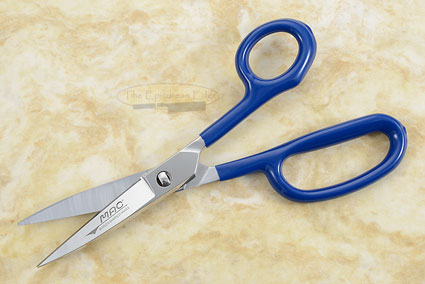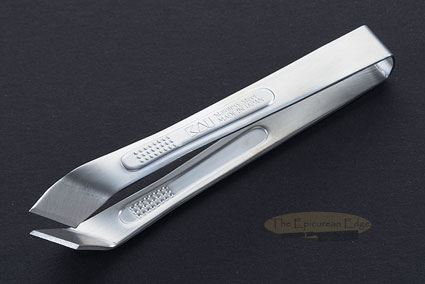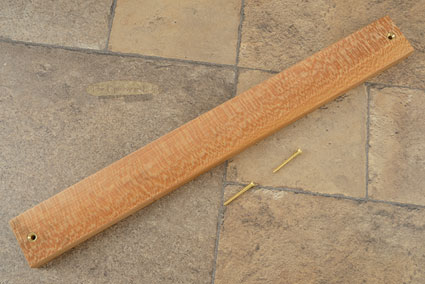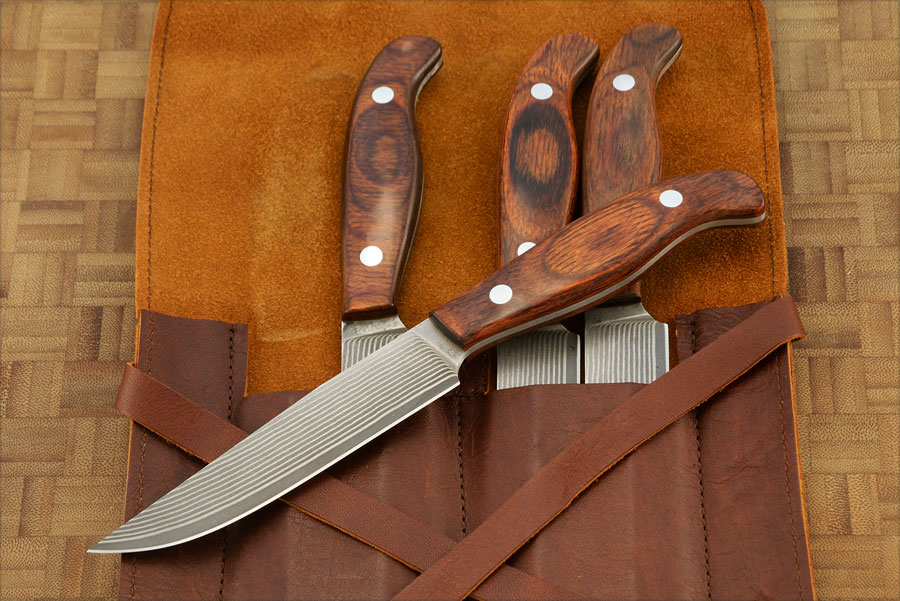Japanese Single Bevel Kitchen Knives
The Kanji characters for Hocho are a synonym for "symbol of wealth". The Hocho is an important part of Japanese culture and is highly valued as a gift item for weddings and other important social events.
Time consuming forging techniques known as "Hon Kasumi" and "Hon Yaki" ensure our Hocho will take and hold an edge impossible to obtain with any Western-made knife. With care in handling and sharpening, the cutting qualities of your Hocho will be easily maintained over the years.
A well sharpened edge is a delicate thing. Always use a cutting board. We recommend soft wood boards, as they are considerably easier on the edge than are plastic boards. Our favorite cutting board is hinoki wood. Be sure never to strike the edge against a hard surface such as counter tops, metal objects or glassware, etc. Never use the blade as a pry bar or can opener and refrain from sending your knife through the dishwasher.
The Sashimi and Usuba shapes should never be used to cut bones or vegetables with a hard rind (such as winter squash). They should only be used for slicing -- never for cleaving.
The Deba shape can be used to cut uncooked chicken and fish bones. The proper way to cut bone is to place the knife on the spot where the cut is to be made and then strike the top edge of the blade with the palm of the left hand, while at the same time applying downward pressure on the handle with the right hand.
After use, always rinse the blade in warm water and wipe dry. Apply a bit of camellia oil to the blade and store in a dry, well protected place. A wooden sheath is well worth the investment to protect the edge during storage. Wooden sheaths are available from BladeGallery Inc and are individually made for each knife.
Sharpening
Sharpening a single bevel Hocho is relatively easy. The first step is to obtain several water stones. Our website lists several waterstone sets that we have found to be ideal for sharpening. As a rule of thumb, having a coarse #220 grit stone, a fine #8000 grit stone and a couples grits in between is adequate.
After submerging the stones in a container of water for several minutes, verify that the stones are flat. There are many techniques to flatten stones, but the best is perhaps to use a stone flattener. It will be obvious by inspection when the stone surface is flat.
Only the bevel side of the knife is sharpened on coarse and medium grit stones. Turn the blade over and sharpen the bevel side. Hold the blade at an angle of about 30 degrees to the length of the stone. Rub up and down the stone while at the same time moving the blade across the width of the stone. With long blades, it will be necessary to sharpen a section at a time. Be sure to keep the bevel flat on the stone while sharpening. Continue in this manner until a wire edge is detected along the full length of the blade. Now transfer the blade to the next finest grit and remove the scratches from the previous grit.
When finishing grits have been reached (greater than #3000 grit), both the hollow ground and bevel sides are sharpened. For every pass on the hollow side, you should perform nine passes on the beveled side.
When the final polishing stone has been reached, polish both sides as described above until both are well polished and the wire edge is removed. Finally, tip the bevel side up approximately 3 degrees and hone for six or seven strokes on the bevel side. Reverse the blade and again hone the back side flat on the stone for an equal number of strokes. This step creates a micro-bevel which toughens the edge without harming its cutting effect.
The purchaser should feel free at any time to contact us with any questions regarding the care and use of their Hocho.
Supplies
If not obtainable locally, Camellia oil and sharpening stones are available from BladeGallery In at our websites or through our retail store. BladeGallery Inc offers the largest selection of water stones available to suit any sharpening situation.
We have developed several waterstone sets that we have found to be ideal for sharpening. We highly recommend our standard sharpening set, which includes a #220 grit ceramic stone, an #800/#4000 grit combination stone, and an #8000 grit Kitayama stone. A stone holder and nagura stone is also included. If you are undecided as to which stones to select, please feel free to call or e-mail for our recommendation.



